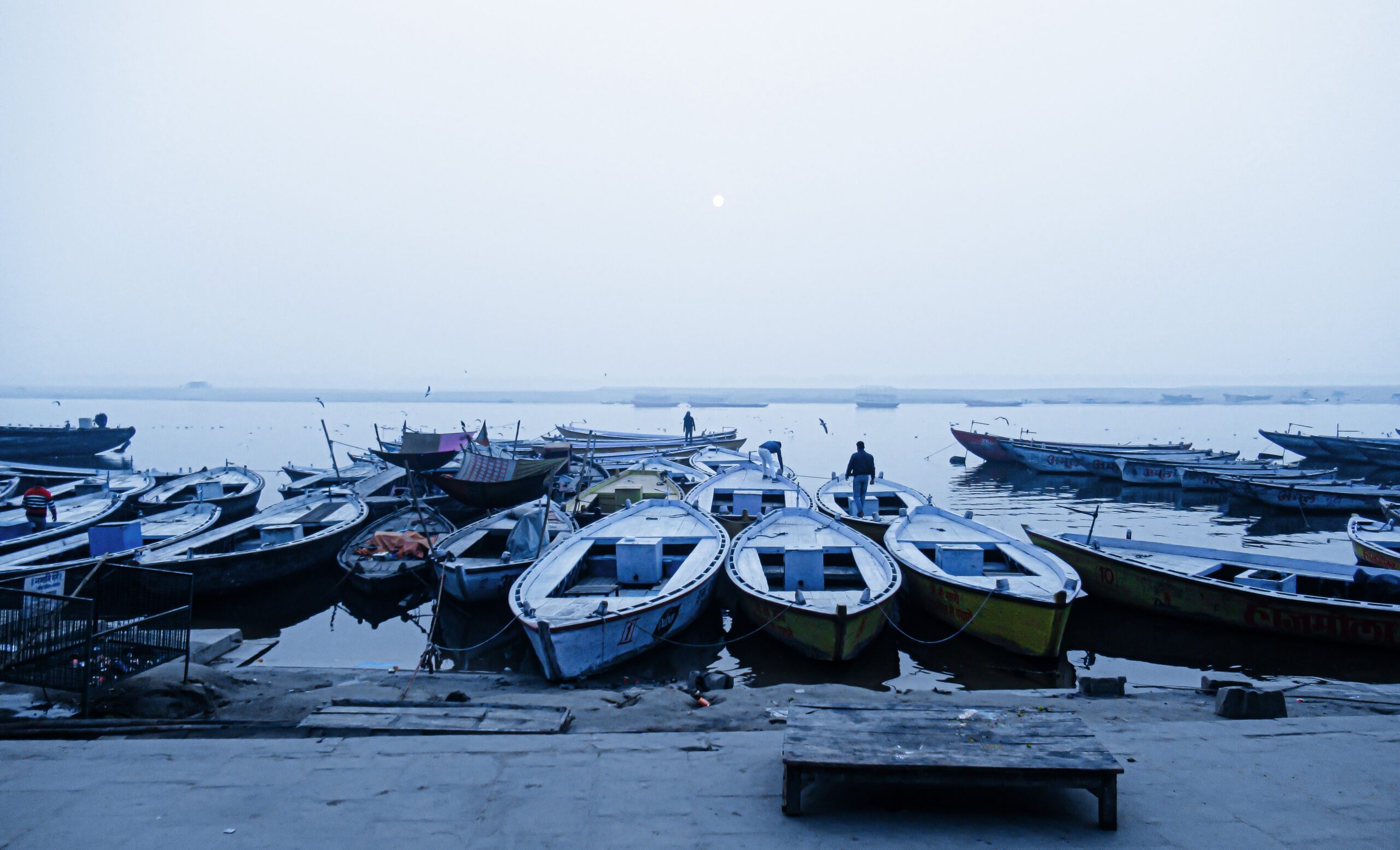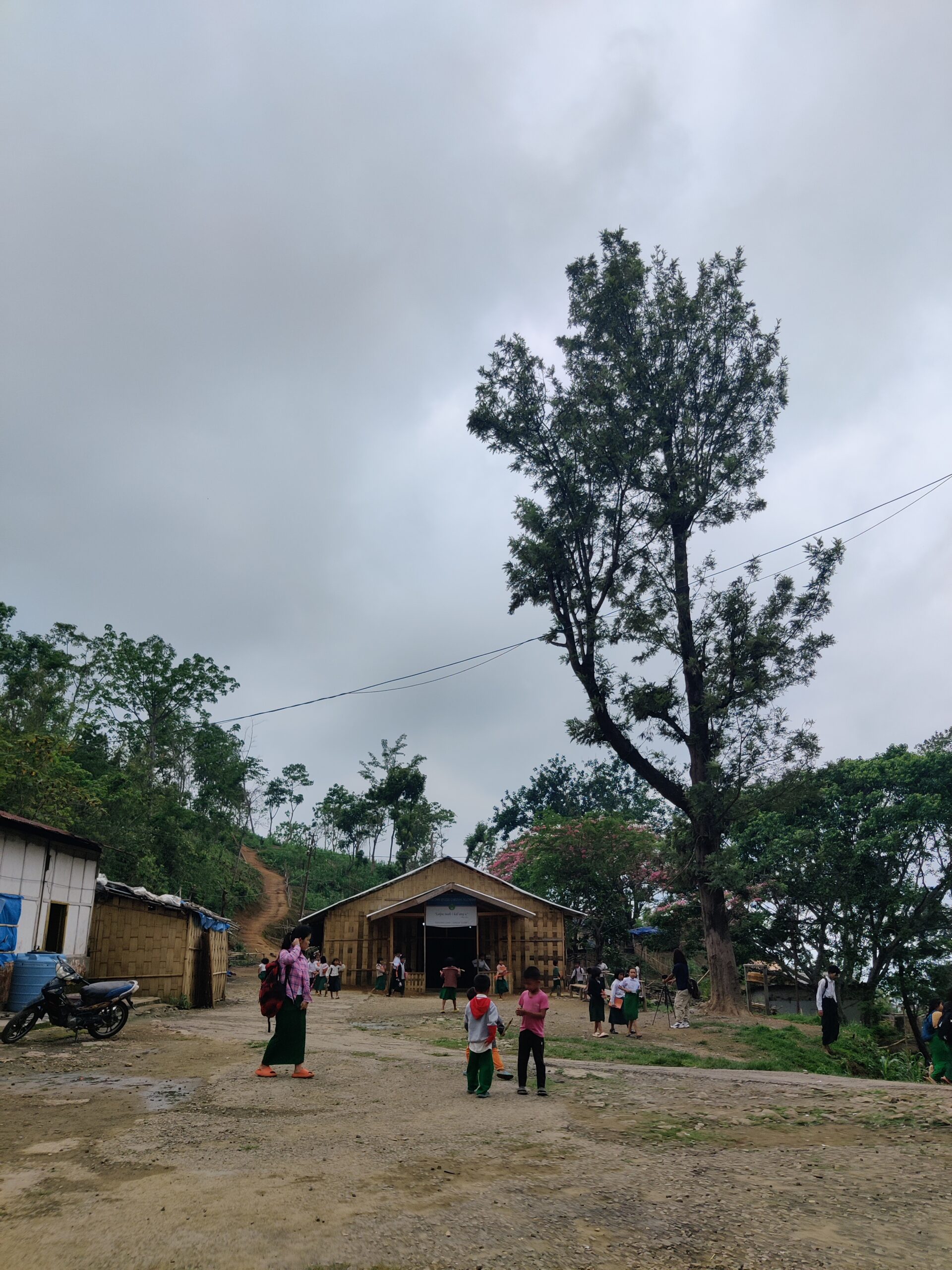| Chandrika R Krishnan | October 2023 | Photo Essay |
The shrill honk went right through my ears to rattle my brain. The e-rickshaws and regular autos vied for space, blaring their way through the crowd. The drivers of the few cars seemingly sat on their horns as I tried to give way to them. Amidst all the commotion, the humble cycle-rickshaw puller huffed his way with his two human cargos. I gingerly stepped over the red paan stains and took in the whiff of freshly-made jalebis and masala pooris wafting from tiny thatched-roof restaurants with benches and chairs of dubious sturdiness placed outside the shop. But looking at the number of people sitting comfortably on them, busy licking their fingers with gusto, I had to gracefully accept the sturdiness of the bench and the popularity of the place. The chai-wallah looked at me, hopefully sensing the inveterate tea drinker in me, but I demurred with a shake of my head.
I navigated the narrow lanes till I reached the top of the steps leading to the Ghats of the city of Varanasi, hitherto known as Kashi, and also goes by the name Benaras. Traditional etymology links “Varanasi” to two Ganges tributaries forming the city’s borders: Varuna, still flowing in northern Varanasi, and Assi. The name Varanasi was spelled Baranasi in Pali, which ultimately gave birth to the name Banaras. This city is known for its learning and hosts one of the prestigious public universities, the Benaras Hindu University. The city of Kashi has its root in the Sanskrit etymology ‘to shine,’ and hence Varanasi is also called the City of Light.
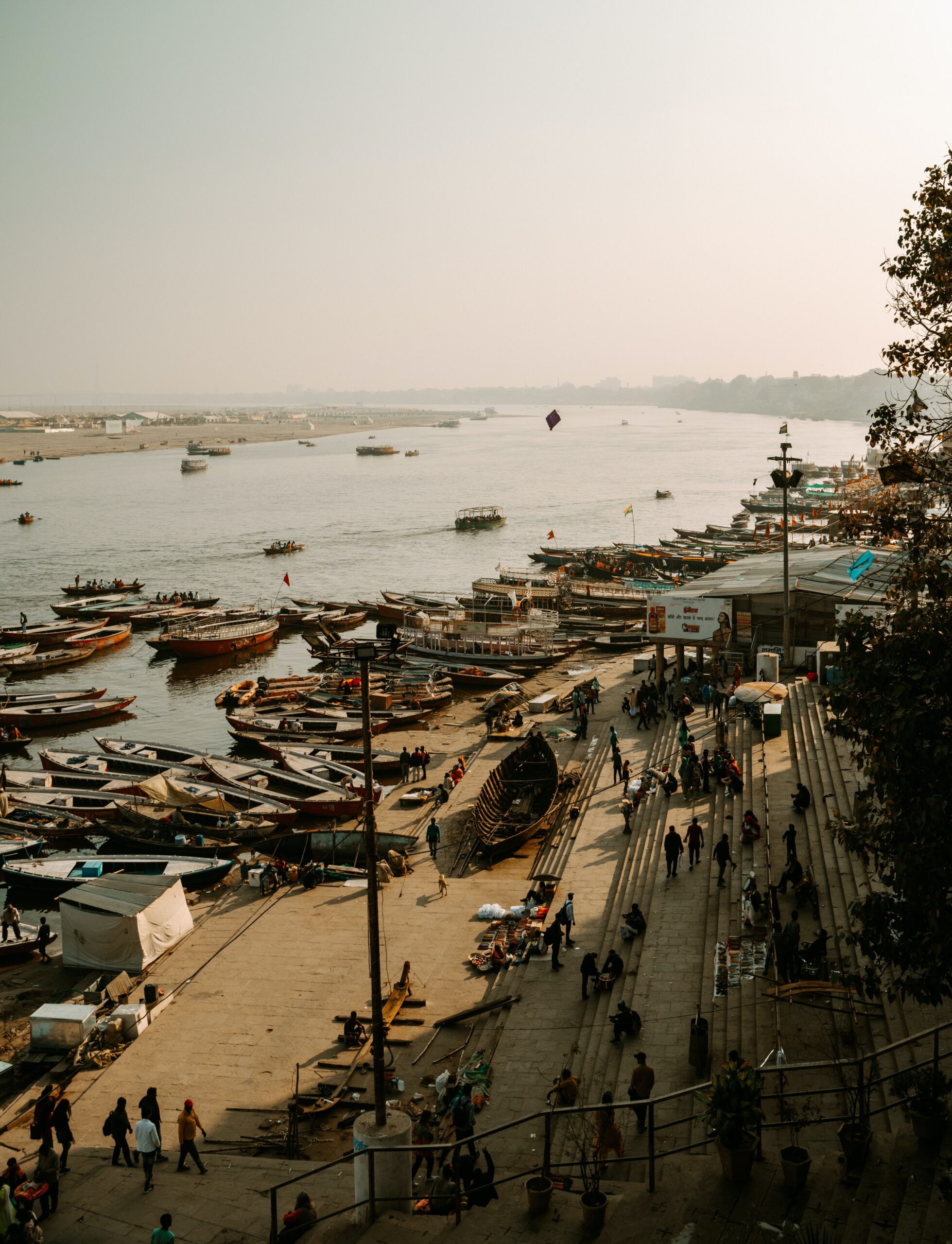
Just as suddenly, I left behind the chaos taking in the mighty river flowing quietly without a gurgle as surely as it had for ages passing through this ancient, inhabited city of over 3000 years. The smooth flow belied the power of the current, and it was all the more evident by the energetic bobbing of the boats along the Ghats. I walked towards the banks, sidestepping the broken, uneven steps, and reached the shores. The setting sun set the river ablaze, and above it, the birds raised a cacophony, trying to settle down for the night on the equally ancient, twisted Peepal tree, which had one of its branches almost kissing the river.
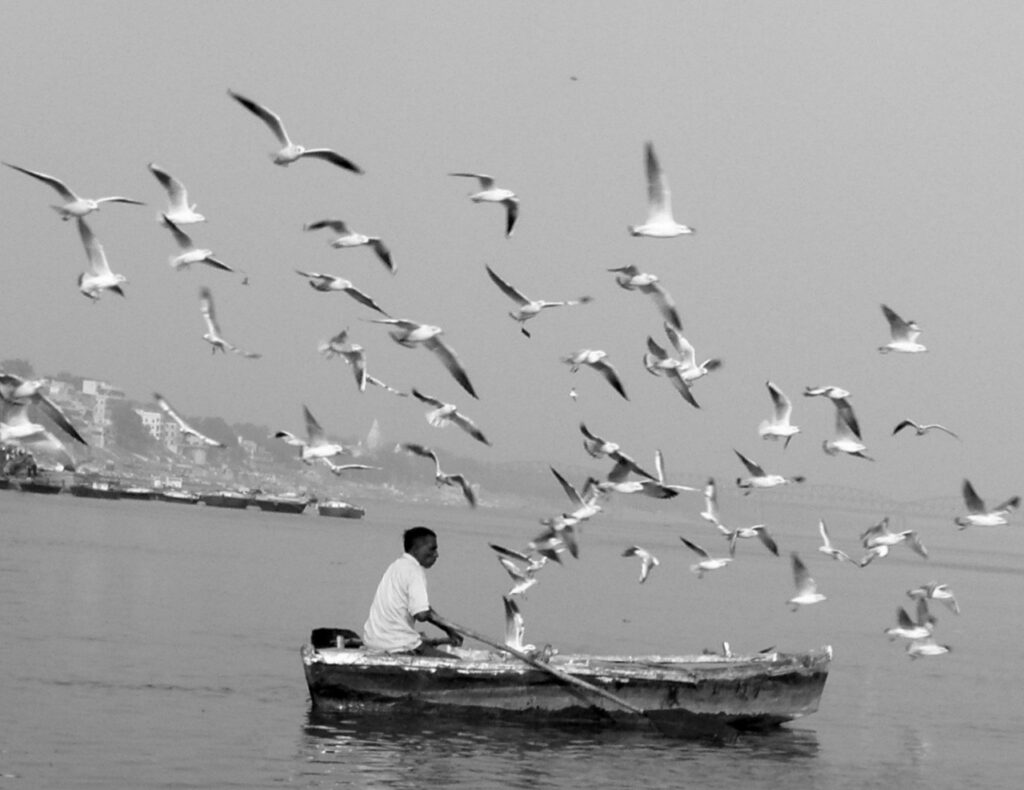
The lights twinkled along the uneven Ghats casting a mesmerizing shadow in the river. A steady stream of cars traversed across a far-off rail/road bridge built across the river. A cruise ship twinkled away at a distance taking with it several tourists. Closer to the banks, tourists who could either not afford the cruise or could not find a spot in them haggled with the boatsmen to take them across a few ghats. Marveling at the city that balanced the old and the new with élan, I sat on the steps, oblivious to the dirt left behind by millions of feet that must have doubtless traversed the same steps.
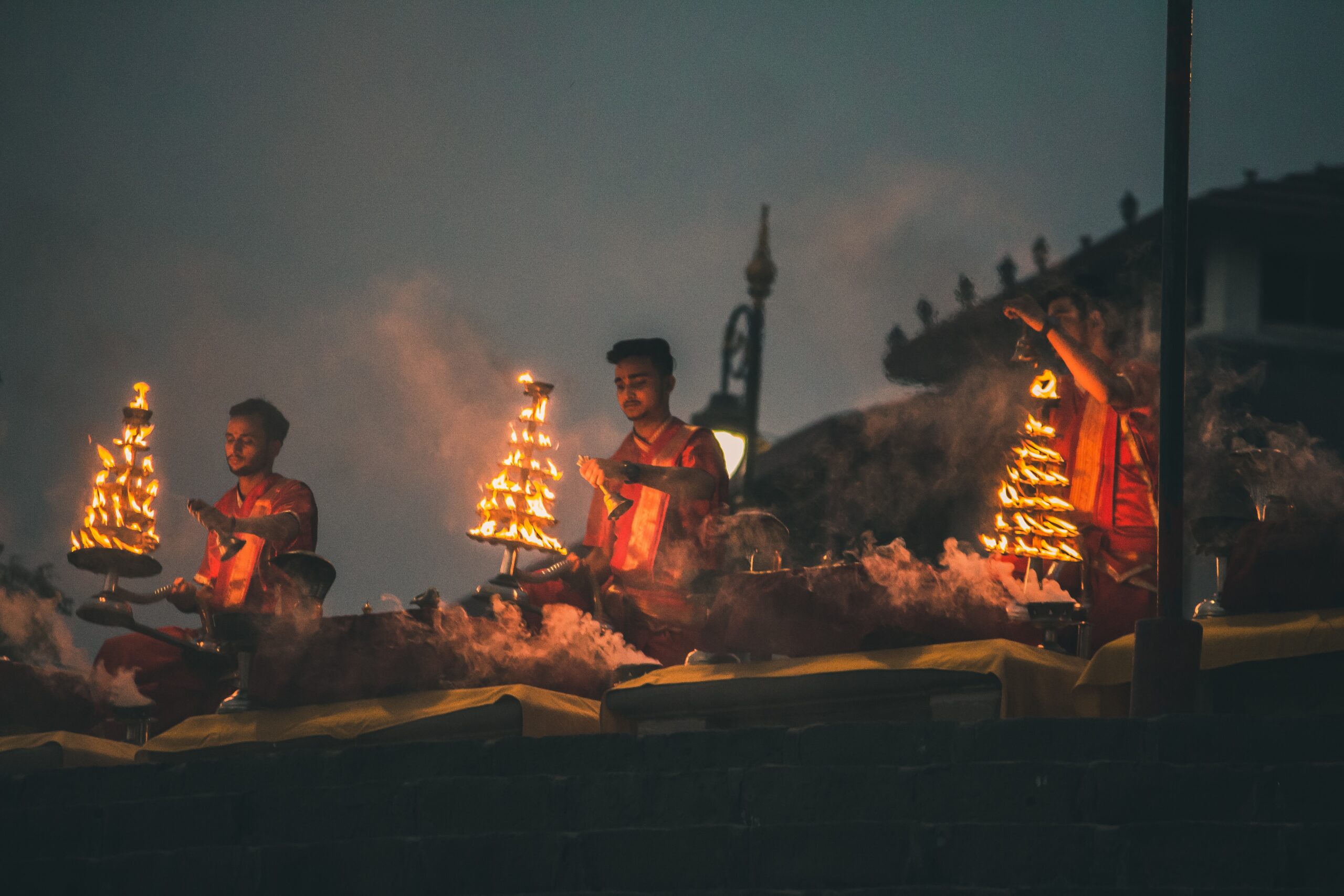
Watching the river as it turned dark, I looked across as prayers were offered to the river from various strategic points in this city, which supposedly boasts 88 Ghats. Come morning, the very same ghats would ring over with the priests guiding the thousands who either come to cremate their loved ones or to offer food and prayers to their departed parents and their ancestors to help them attain Moksh (salvation from the cycle of death and re-birth).
Mark Twain is supposed to have said, “Benares is older than history, older than tradition, older even than legend, and looks twice as old as all of them put together.” According to mythology, Lord Shiva, one of the trinity of Hindu Gods, was so impressed by Varanasi that he performed Ashwamedha Yagnas with the help of King Divodasa. The place still exists in the name of Dashawamedha Ghat. Archaeologists believe that the first settlements in Varanasi happened in the 11th or 12th century BC. Varanasi is a Vedic religion and philosophy seat and a commercial and industrial center famous for its muslin and silk fabrics. Varanasi’s proud daughter, Rani Laxmibhai of Jhansi, goes down in history for her courage during the Indian Mutiny of 1857–58.
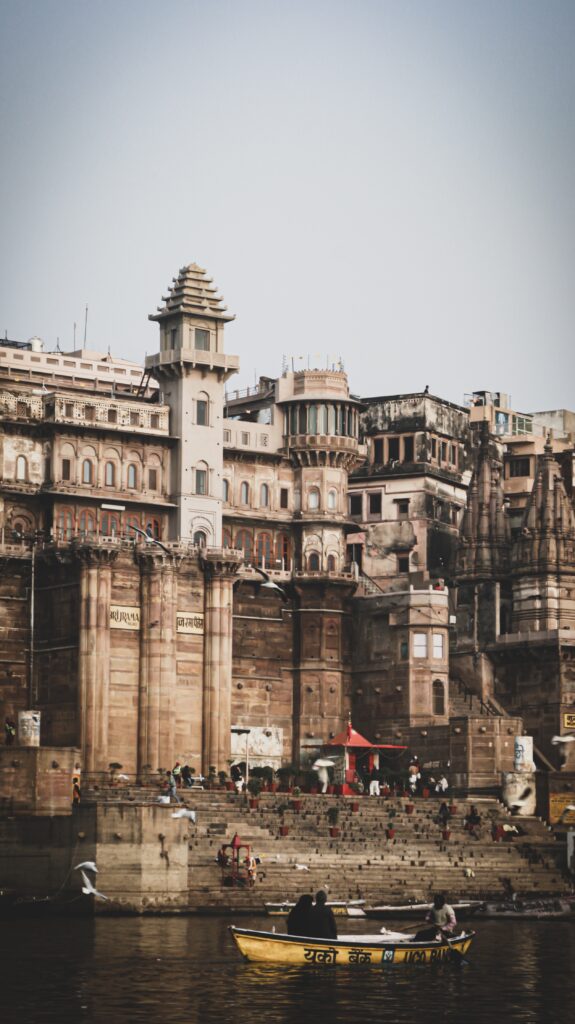
I had ample opportunity to visit Kashi over the years but never felt the need to visit the place. Maybe, the time wasn’t right then, or I wasn’t ready for the intense spiritual journey the city would take me on. My family has been facing stressful times for the last couple of years. I had read somewhere that hindsight is rarely kind. Hence, the heavy weight of guilt and the inexhaustible supply of ‘Why us’ and ‘what next’ weighed me down. The band around my chest was one of familiarity.
The city grew on me and made me fall in love with it more than the previous day. The chaos and cacophony organically blended with the soul of the city. I could not envisage the place without the noise. Compared to other cities, the development and expansion of roads are just not feasible. The town’s soul lay in the narrow streets, congested houses, and temples on every corner. Some of the temples had to be accessed by narrow staircases. As I witness the evening Aarti*, not just by myself but also from the eyes of the four overseas travelers sitting next to me, I am taken in by the spectacle of young men doing a rhythmic dance offering invocations to the river. For most people living there, Ganga is not just a river, but she is an eternal provider like a mother and is thus termed Ma Gangaji.
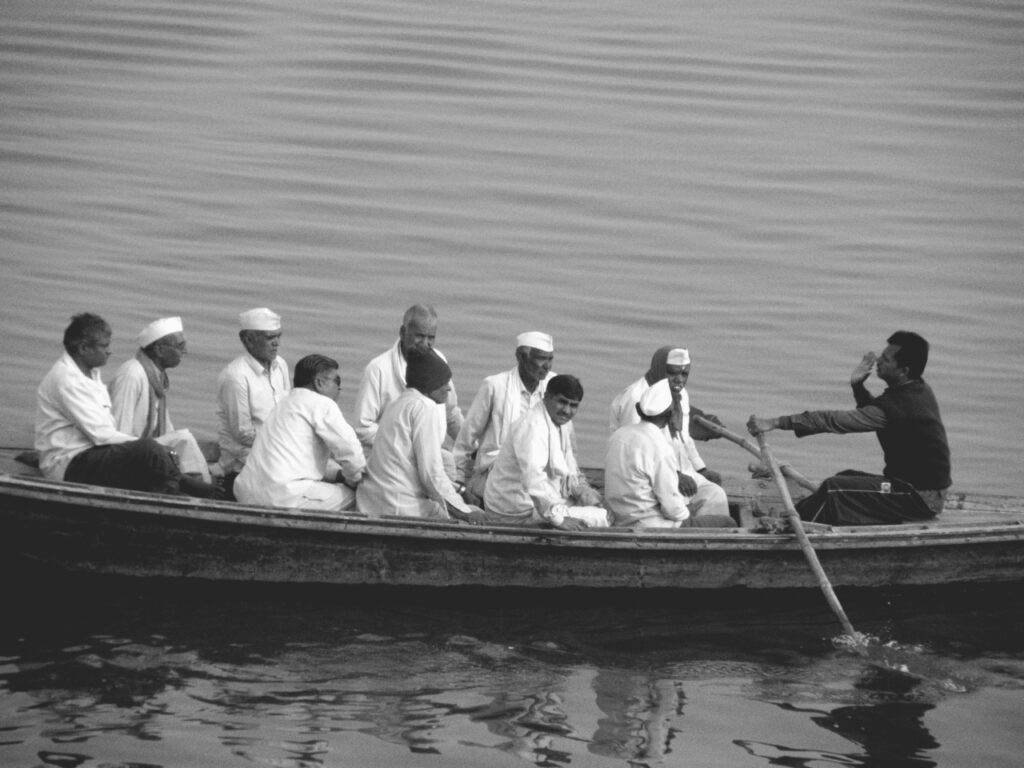
Varanasi has been in the news lately not only because of the newly inaugurated Ganga Vilas Cruise (which is purportedly booked till March 2024) and the Varanasi Tent City, a luxurious, tented resort located on the banks of the holy Ganga River with the sole intention of attracting tourists. Meanwhile, researchers from CSIR’s National Environmental Engineering Research Institute (NEERI) are trying to analyze the sediment of the Ganga River to enable them to identify what makes the river remain safe and fresh for years. But for the believers, the study makes no difference as they lug back gallons of water back home to distribute, store, and use during most rituals.
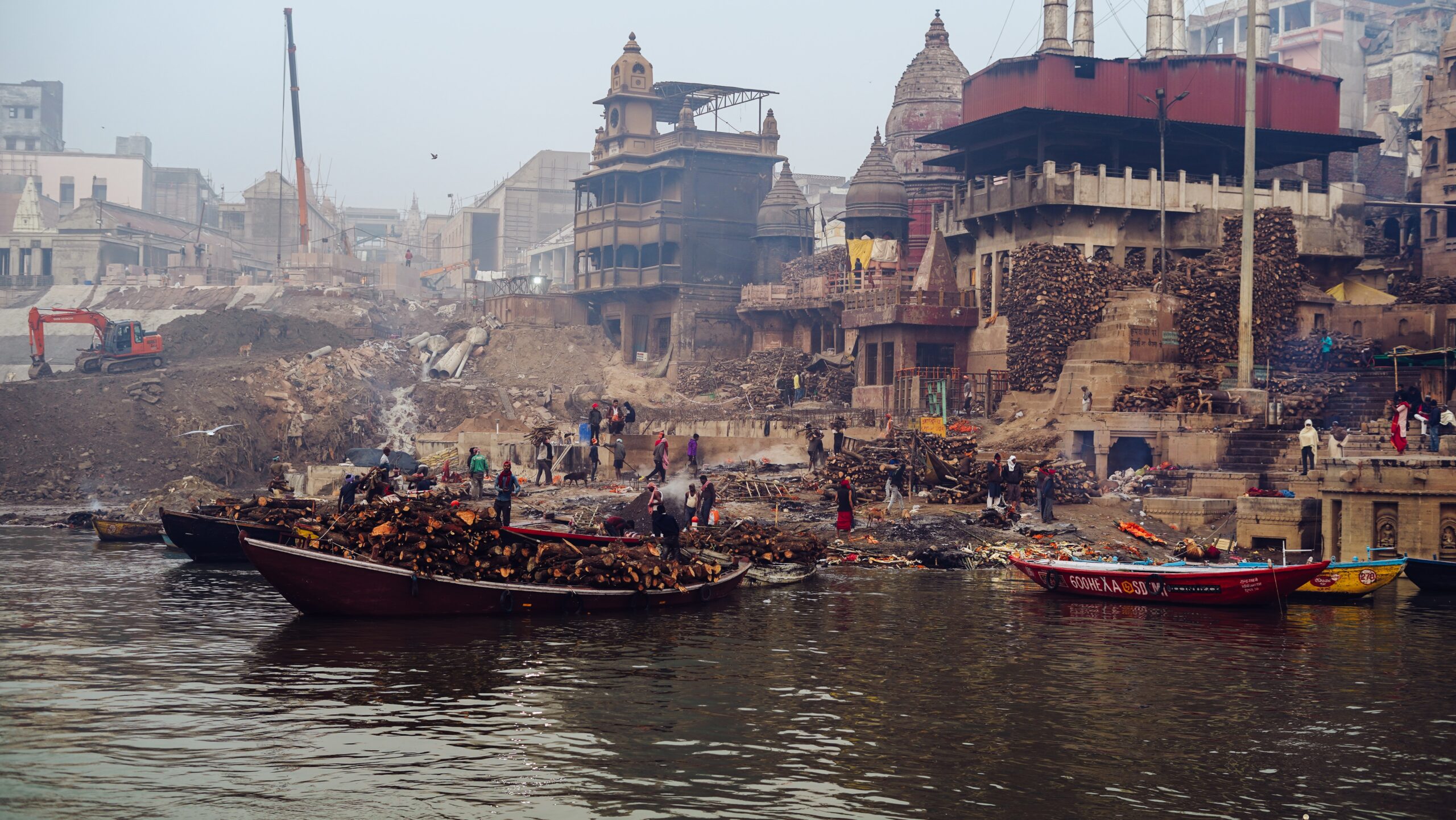

Be it the Manikarnika Ghat, where bodies are cremated round the clock, or the lodge called ‘ Mukti Bhavan,’ where people in the last throes of life ‘check in’ to die, I am left speechless and amazed at how faith can help people accept the inevitability of death with the fortitude the city demands.
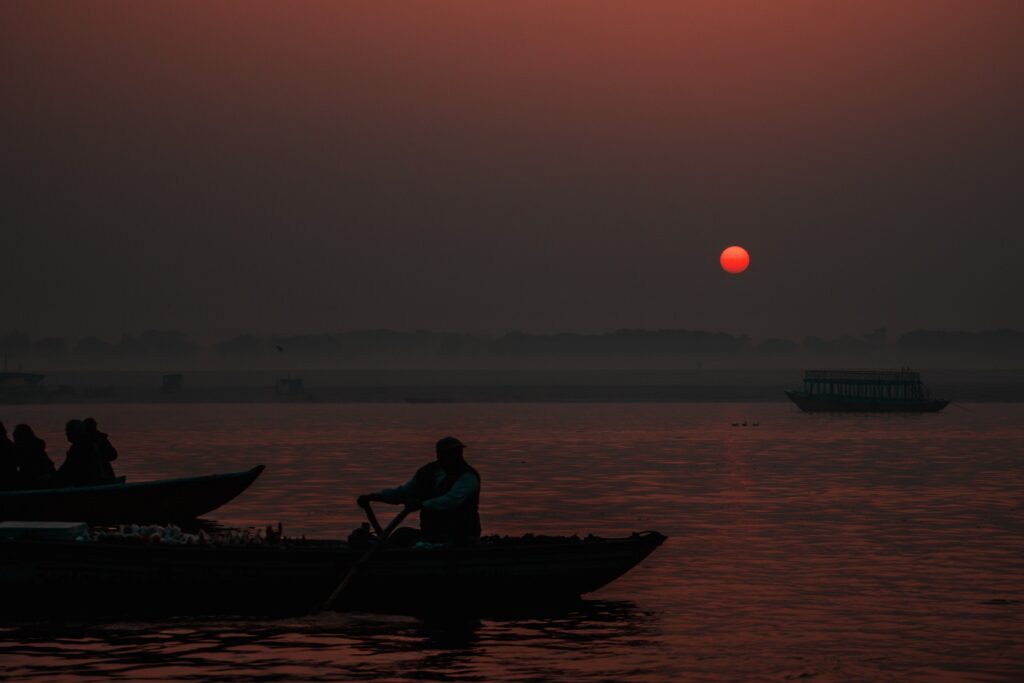
The moon rose, the light reflecting from it shimmering on the water. As I sat by the river, the familiar flutter settled down, the tightness of the chest giving way to serenity and I rose reluctantly, aware that it was time to return to my room. Like the river, I had to continue my journey. The worry and the uncertainty of the future remained. Calmer, I pondered on the insignificance of my existence in the grand scheme of things. Rarely do I visit the same place. But this once, I promised to return to sit by its banks again soon. The river and the shimmering light of the city continue to ‘flash on my inward eye’ whenever I am overwhelmed by circumstances and the quietude is once again mine to savour.
_________________________
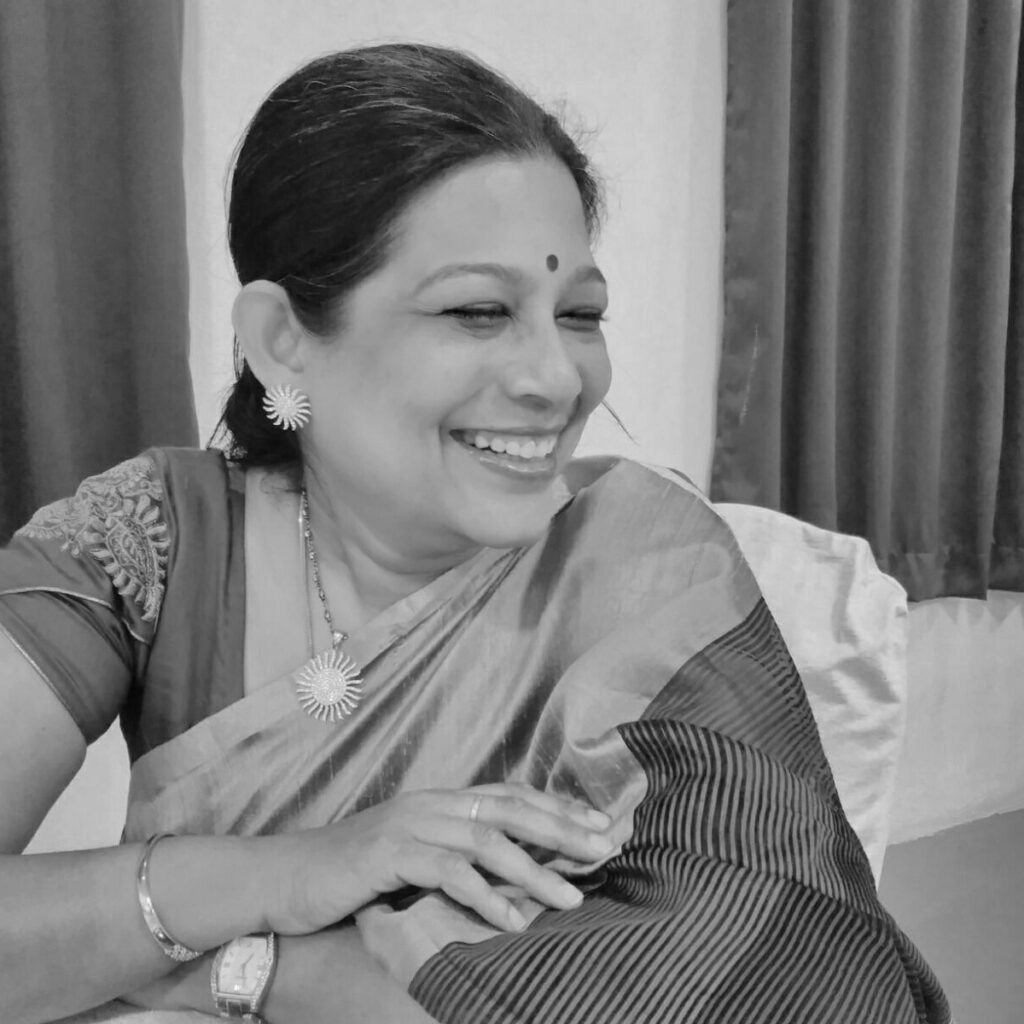
Chandrika R Krishnan is a Bengaluru-based writer and educationist, who likes all things beginning with a ‘T’ – talking, teaching, tales, and tea. A people person and a wordsmith, she weaves fiction and dispenses ‘gyaan’ alike on the unsuspecting audience. Her 250+ articles, poems, and stories have found a place in both print and online media. Her collection of flash fiction titled- vignettes- a slice of life. along with her other anthologies. are available on Amazon.
_________________________
Find The Mean Journal on Instagram @MeanPepperVine
